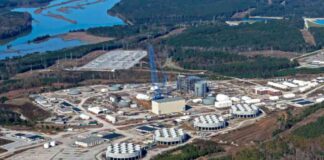The Impact of Trump’s Environmental Deregulation on Public Health
The National Environmental Policy Act (NEPA) has been a cornerstone of environmental law in the United States for over fifty years. Enacted in 1970, NEPA was established in response to environmental crises, such as the infamous Cuyahoga River fire in Cleveland and widespread smog pollution in American cities. It mandates that any significant infrastructure project funded or approved by the federal government must undergo a thorough assessment of its environmental impact before proceeding.
For decades, the Council on Environmental Quality (CEQ) has played a vital role in overseeing the implementation of NEPA. Situated within the White House, the CEQ has acted as a central authority in interpreting and enforcing the law across various federal agencies. Through issuing rules, defining key terms, and setting guidelines for project analysis, the CEQ ensured consistency in how NEPA was applied.
However, recent developments have brought significant changes to the NEPA process. The Trump administration has issued an interim rule that seeks to dismantle the CEQ’s regulations and instruct individual federal agencies to establish their own NEPA guidelines. This move is intended to streamline the permitting process for infrastructure projects, but experts warn that it may lead to confusion and inefficiency.
Deborah Sivas, director of the environmental law clinic at Stanford University, describes the current situation as chaotic, with developers uncertain about the standards and procedures they need to follow. Compliance with NEPA involves extensive environmental assessments that can take years to complete. The process is resource-intensive and has become a focal point for lawmakers seeking to expedite infrastructure development, particularly in the renewable energy sector.
Justin Pidot, a law professor at the University of Arizona and former general counsel at CEQ, criticizes the administration’s decision to dismantle the CEQ’s authority, labeling it a significant mistake. He predicts that the new procedures introduced by federal agencies will increase complexity and uncertainty in the permitting process, especially at a time when there is a shortage of federal expertise.
Recent court rulings have also raised questions about the CEQ’s regulatory authority. Judges in two separate cases suggested that the CEQ may not have the power to issue binding regulations under NEPA. These legal challenges, coupled with Trump’s executive order, have further eroded the CEQ’s influence and cast doubt on the future of environmental policy implementation.
Despite these uncertainties, existing NEPA requirements are expected to remain in place for ongoing projects, pending any conflicting changes introduced by federal agencies. The repercussions of the administration’s actions are far-reaching, affecting a wide range of stakeholders, including fossil fuel developers who rely on federal permits for their projects.
In conclusion, the unraveling of the CEQ’s authority under the Trump administration has raised concerns about the future of environmental regulation and public health. While the intent may be to expedite infrastructure development, the consequences are likely to be increased complexity, uncertainty, and inefficiency. As the debate over environmental policy continues, the long-term impact of these changes remains to be seen.














